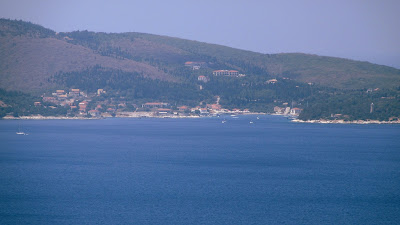When I was young, it was 'common knowledge' that the largest city in the world was Tokyo. Notwithstanding the slightly chagrinned feeling I had back then that the title surely ought to go to London, it seemed appropriate that the rivals should be so far from each other, on islands on opposite sides of the world. Later on, I learnt from Alan Macfarlane's magisterial The Savage Wars of Peace that the correspondences [if not similarities] between the two cultures were greater than one might have imagined. But apart from that I haven't studied Japan much, and it still seems a very remote place, although like all of us my life has been transformed by Japanese technology and industrial design.
So an invitation to the V&A's refurbished Toshiba Gallery when it repoened was very welcome. Toshiba were the V&A's first corporate sponsors, and the gallery first opened in 1986, as investment in Britain by Toshiba and other Japanese companies was reshaping our industrial landscape. It drew on the V&A's remarkable collection of Japanese art, assembled from 1852 onwards, just as Japan was opening up to Western countries after nearly three centuries of seclusion. This rejuvenation of the gallery isn't a huge upheaval; the aim was mainly to improve the lighting and to provide space for more contemporary art. This was done by editing displays - like the porcelain - which overlap with other galleries in the Museum.
So you'll find some familiar objects, like this spectacular 19th century suit of armour, which is one of the highlights of a display at the front of the gallery about the Samurai warrior tradition. The display also includes the weaponry the samurai carried. The swords are especially impressive. The gleaming, murderous blades - Japanese steel was once the best in the world - still glitter with danger. An entertaining video, derived from a historic Japanese illustrated manual, demonstrates the very many stages it required to put on a suit of armour like this.
It's echoed across the gallery by another video in which a model demonstrates the nearly as complex task of putting on a kimono like the one on the right [1800-1840] and tying the sash on properly. Again, incredible attention to detail, which matches the superb workmanship of the stunning kimonos on display.
The Samurai have been compared with knights and this display made me feel somehow that I was in a familiar world. How different, I wondered, was this from the world of Sutton Hoo with its pattern-welded swords and decorated armour? Beautiful displays about religion and the tea-ceremony, theatre and the 'Floating World' of pleasure, with its celebrated courtesans had the same effect - some of the prints even seemed to have the same satirical intent as their eighteenth-century counterparts in London. At a time when London and Edo were - probably unknown to each other - indeed vying to be the largest cities on the planet [and according to Macfarlane for many of the same reasons], they seemed to be doing many of the same things.And yet this was without doubt a very different society, with its own characteristic astringently elegant aesthetic.
Sooner or later these two cultures world meet. From the 16th century First Portuguese and then Dutch sailors arrived in Japan and the display demonstrates the interaction that followed. The gallery's perhaps most famous exhibit, the Mazarin Casket [1640-1643] demonstrates the appetite for Japanese goods in the West, even if the recipients can have had little idea of the meaning of the scenes from Japanese and Chinese literature with which it is illustrated. Even though foreigners were confined to a particular island off Nagasaki, to stop them disrupting Japanese society, the Japanese were keen too on Western innovations. There's a spectacular Dutch naval sword - or 'hanger' - decorated in Japanese style for a Samurai warrior, and a delightful print of the scene inside a 'Foreign Goods shop' in which we can see two Japanese gentlemen with a static electricity globe.
After 1852, when the American Commodore Perry forced the Japanese government to open up to foreigners, this parallel world rapidly adapted to the new situation, capitalizing on Japan's traditional craft skills to make exports for the European market in European style [like the figurine on the right] to pay for the modernization which made Japan a first-rank power by the end of the First World War.
The English responded with the Mikado and collections like this one. The swirl of cultural influence grew ever stronger, despite the second world war. Look at the delightful kimono , woven to celebrate the first flight between Tokyo and London in the 1930s, which has all the excitement of the contemporary Daily Mail.
At the same time, as the exhibition shows. that modernity prompted a new awareness of Japanese folk culture. For despite their facility for adapting exotic cultural forms [they'd been doing it to Chinese culture for millennia], as this exhibition shows they've never been submerged by them, And as the Heel-less Shoes by Noritako Tatehana [2014] demonstrate by referencing the impossibly high heels of Edo courtesans, they do it with style and humour.
And the craze for 'cute' [kawaii - see below] once a fad among young girls, but now self-consciously [or unconsciously] seeping through the culture, shows how slyly, entertainingly creative this parallel universe can be.
This outfit, Sweet Lolita ensemble by the brand Baby, The Stars Shine Bright, uses a dress with clock, tea-party and playing card motifs to reference Alice in Wonderland. What should we think? This exhibition is a wonderful introduction to a parallel universe indeed.

































